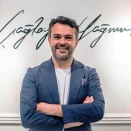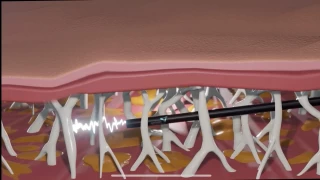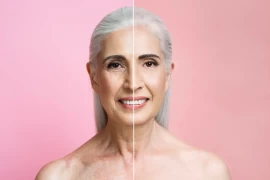
Facial Asymmetry
- Facial Asymmetry
- Conditions Requiring Facial Asymmetry Surgery
- Healing Processes After Facial Asymmetry Surgery
Facial asymmetry is the unequal right and left halves of a person's face. This condition may be congenital or result from some injury or surgery. Facial asymmetry is usually present at birth and is mild in most people. However, in some people, facial asymmetry may be more pronounced and affect the beautiful appearance of the person.
There are some treatment options to reduce facial asymmetry. Among these options, the most commonly used methods are:
Surgical intervention: Depending on the cause of facial asymmetry, surgical intervention can be performed to ensure the symmetry of the face by changing the shape of some structures on the face.
Dermal fillers: Fillers can be applied to some areas of the face to make the face appear more symmetrical.
Botox: Botox can be applied to make the face look more symmetrical by reducing the work of the facial muscles.
It is recommended to consult with a plastic surgeon or plastic surgeon to determine the most suitable option for the treatment of facial asymmetry. These specialists can evaluate the causes and level of facial asymmetry and recommend the most appropriate treatment option for you.
Conditions Requiring Facial Asymmetry Surgery
Facial asymmetry is the non-standard size and shape of the eyes, nose and other facial elements on one side of the face. Facial asymmetry can be a congenital condition, but it can also be caused by trauma, infection, or some other reason. Facial asymmetry can be aesthetically disturbing and affect people's daily lives.
Facial aesthetic surgeries can be used to prevent or correct facial asymmetry. These surgeries aim to regulate facial symmetry by changing the nose, eyelids, lips, chin and other facial elements. Facial asymmetry surgery can be done to correct any facial abnormality or asymmetry. For example, rhinoplasty (rhinosplasty) can regulate nasal asymmetry by changing the shape and size of the nose. A surgery called blepharoplasty can be done to straighten the eyelids. Orthodontic and dental surgeries can be performed to change the shape and position of the jaws and teeth.
Facial asymmetry surgeries are usually performed by a plastic surgeon. Before surgery, the surgeon tries to understand the patient's goals and expectations and determines the most appropriate treatment method. During surgery, the surgeon tries to restore facial symmetry by cutting or replacing facial elements with sprains. Post-surgery, the patient may require bed rest for a few days, and there may be pain and swelling. It is important to follow the instructions given by the doctor so that the healing process can be faster and without complications.

Healing Processes After Facial Asymmetry Surgery
Facial asymmetry surgery is a surgical intervention performed to regulate facial asymmetry. The recovery process after this surgery may vary in different people, but in general it is as follows:
First days after surgery: There may be swelling, bruising and pain in the wound area after the surgery. These conditions may be more intense in the first days after surgery, but will decrease over time. Pain medications may be given to reduce pain.
First week: In the first week after surgery, swelling and bruising in the wound area begin to decrease. Trying to move the face in this process can speed up the post-operative processes.
Second week: In the second week, swelling and bruising in the wound area are further reduced. The face can continue to move, but it is recommended to avoid excessive movements.
Third week and after: In the third week and later, swelling and bruising in the wound area completely disappear and healing is completed. In this process, facial movements can return to normal and facial asymmetry decreases or disappears.
The healing process may be different for each patient, and it is important to follow the doctor's recommendations during this process. For example, taking the medications recommended by the doctor regularly, paying attention to the wound area and avoiding excessive movements can speed up the healing process.





